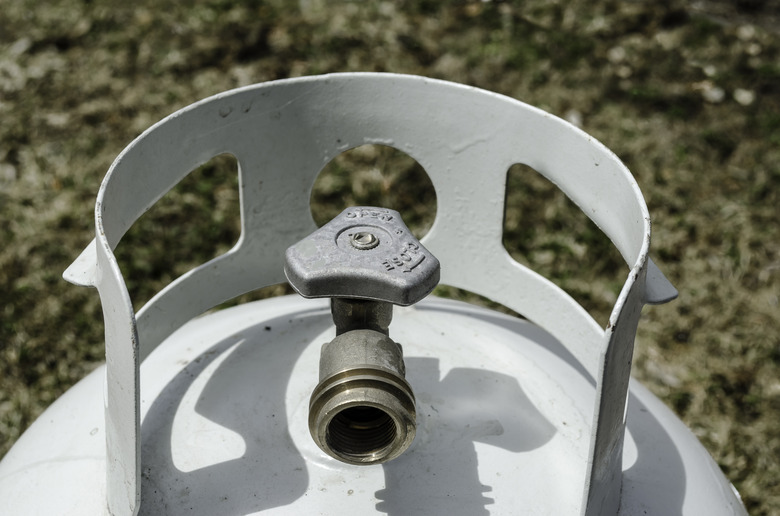How To Recertify Propane Tanks
Ordinarily, when your grill's propane tank runs dry, you can simply take it to a local retailer and have it refilled. This process may seem unregulated, but it's actually monitored by the United States Department of Transportation. Propane gas cylinders must periodically undergo a safety check and recertification process. If you try to refill a tank that's due for recertification, the attendant refilling the tank will refuse your tank. Fortunately, getting a tank recertified is a simple process.
How Do I Know a Tank Is Due?
Propane tanks are good for 12 years from the date of manufacture. After that, they typically need inspecting and recertification every five years. To check your tank's status, look at the collar at the top of the tank. You'll find the date of manufacture stamped into the collar using the typical month and year code. A tank stamped 06 18, for example, was manufactured in June 2018.
When the tank is recertified, the company that certifies it will either add a sticker to the tank with the inspection date on it or stamp its own mark into the top of the cylinder. In this case, the date code consists of the letter A, B, C, or D as well as a two-digit number. The letter in the code indicates the quarter, and the number indicates the year that the tank was recertified. A stamp that reads B 20 indicates certification during the second quarter (April, May, or June) of the year 2020.
Where Do I Go?
Propane tank recertification is something you can't do yourself; a qualified inspector must perform the service. The easiest way to find someone who can recertify your tank is to hop on the internet and search for "propane tank certification near me." When you do, a host of propane suppliers and certification specialists close to you will appear on your screen. On average, the cost to recertify a propane tank is between $35 and $60.
Some propane suppliers do things a little differently. Ferrellgas, for example, sells propane tanks under the name Blue Rhino and offers an exchange program. When one of these tanks is empty, you simply take it to an exchange center and trade it for a full one. There is a fee for the cost of the new propane, of course.
Under this system, you leave your old tank behind and get a fresh one that has already undergone inspection, testing, recertification, and repair if necessary. Ferrelllgas then deals with the old tank. This way, you never have to worry about recertifying or repairing your tank. You can simply get a tank that's already been taken care of every time you get more propane.
The Recertification Process
During the propane tank recertification process, a propane tank is inspected thoroughly for any problems. The inspector will look for rust, dents, and gouges severe enough to cause a leak or problem. Inspectors also make sure that any legally necessary tank markings or labels are present and that the foot ring on the bottom of the tank supports the tank in an upright position. A leak test is performed as well, and the tank's relief valve must function properly or get replaced.
If your tank fails the recertification process, you'll need to dispose of it. Some inspectors will take care of disposal for you. Others may charge a tank disposal fee. If you don't want to pay this fee, note that most municipal waste facilities accept propane cylinders for free or for a small fee. Many propane suppliers will also take unwanted tanks off your hands at no charge or direct you to someone who will.
